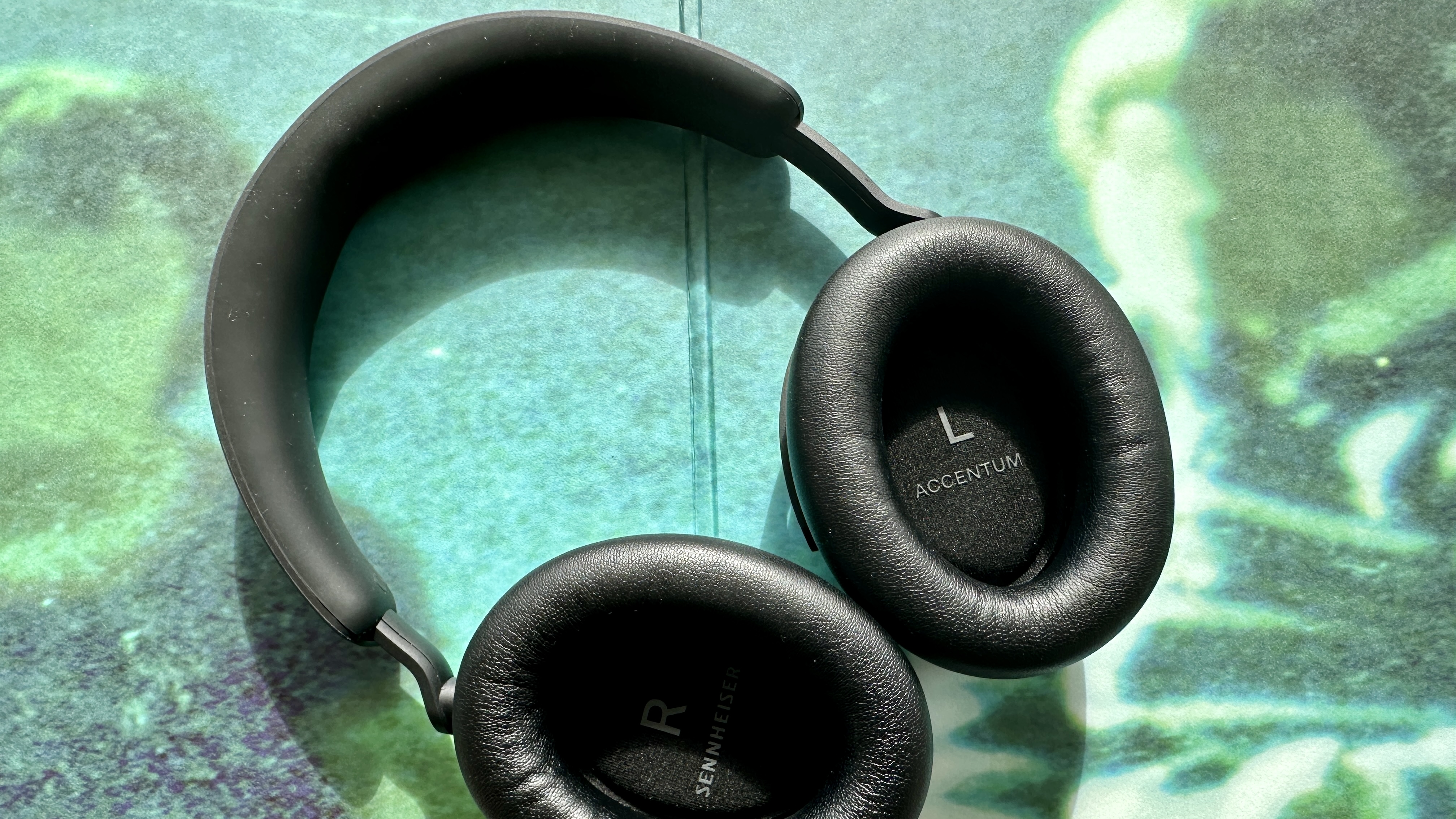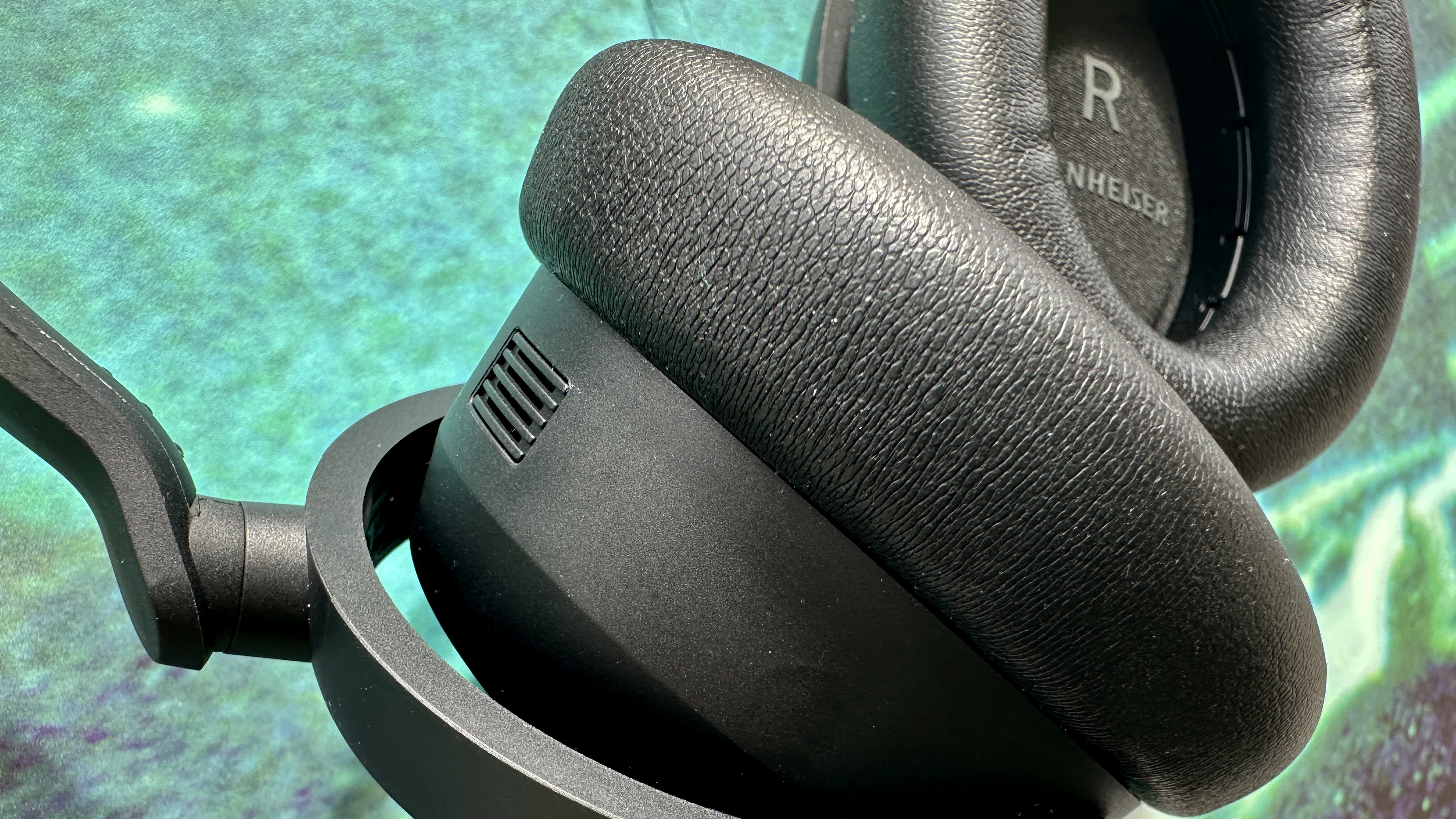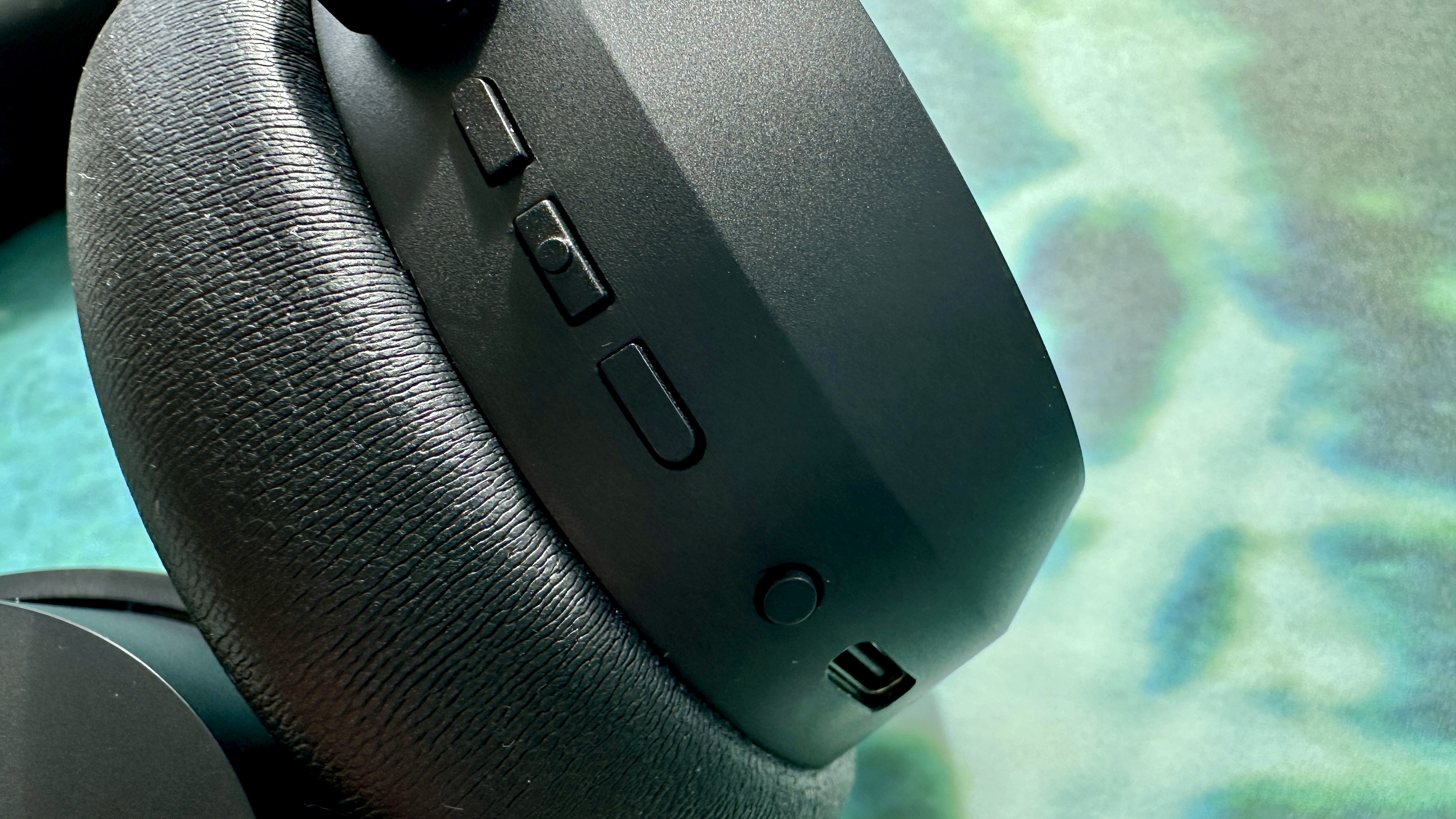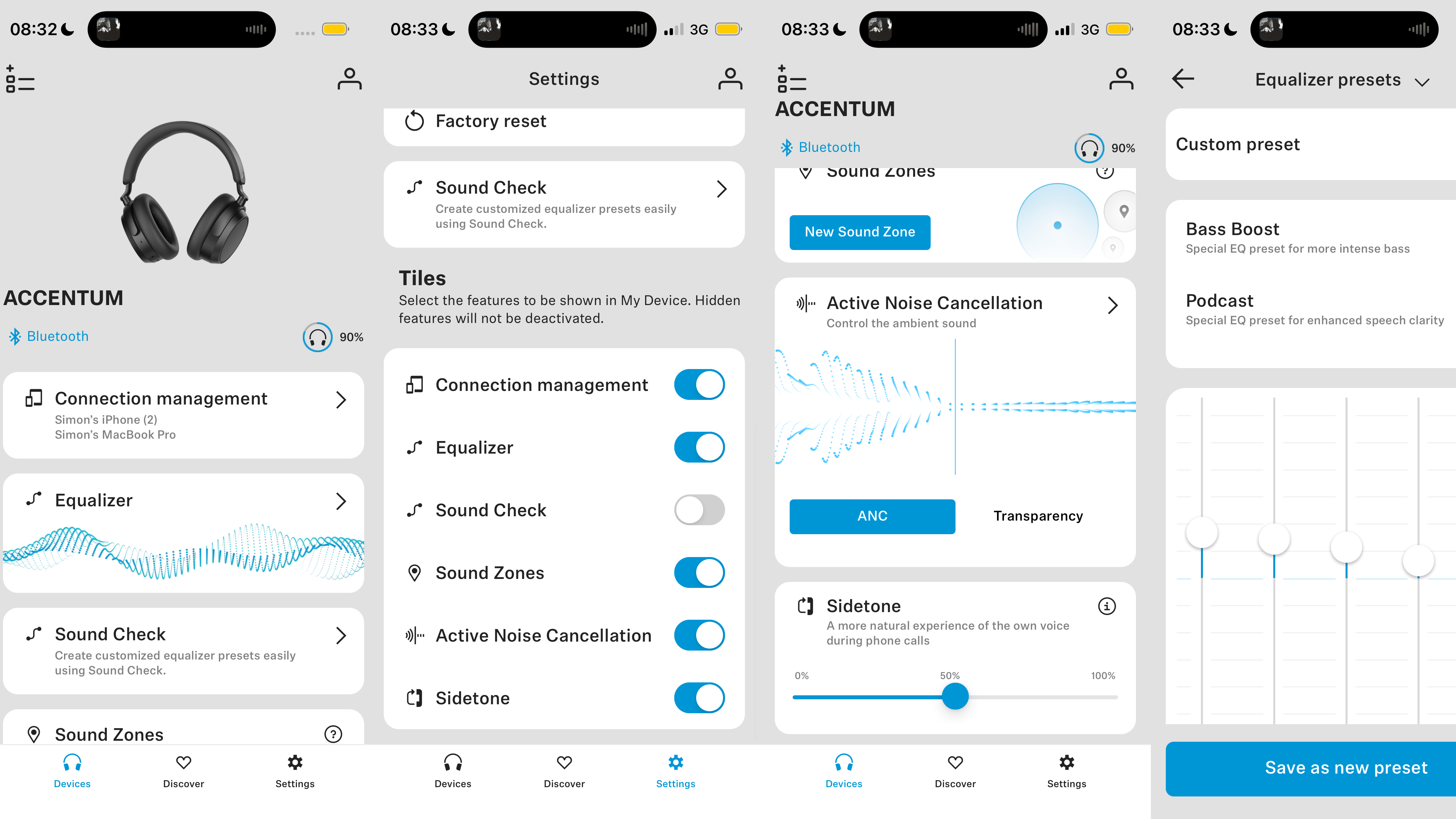Sennheiser Accentum Wireless review: exceptional affordable headphones
Want quality over-ear headphones with noise-cancelling but don't want to be deeply out of pocket? Accentum is the answer


If you’re interested in owning wireless noise-cancellers from one of the biggest brands around but don't fancy paying one of the biggest prices, the Sennheiser Accentum Wireless make an awful lot of sense. The sound won’t grab you by the lapels, it’s true - but they’re a rewarding listen nevertheless and exceptional for this price point.
-
+
Poised, revealing and direct sound
-
+
Impressive spec and great battery life
-
+
Good control options
-
-
Could conceivably sound more demonstrative
-
-
Earpads get quite warm quite quickly
-
-
No carry-case
Why you can trust T3

It’s all well and good having some of the best headphones to compete in the premium market, but what are you going to do for those of us who are looking for the best affordable headphones and who don’t have money to burn?
Well, if you’re Sennheiser, you serve up these Accentum Wireless noise-cancelling over-ear headphones. They’re around half the price of the company’s range-topping Momentum 4 over-ears, and - on paper, at least - they’re equipped to bring a little of the celebrated Sennheiser magic down to a more attainable price.
Mind you, we all know a false economy when we see (and hear) one. So which is it, Sennehsier? Are the Accentum a back door into high-end performance or do they cut too many corners? T3's Accentum Wireless review reveals all...
Sennheiser Accentum: Price & Release Date
The Sennheiser Accentum are on sale now, and in the United Kingdom they sell for £159. In the United States they’re priced at $179. In Australia they go for AU$299.
Enticing though that price-point is, it’s not as if Sennheiser has the field clear. Companies with just as much credibility - like Sony, for example, or JBL - have equally affordable and alluring alternatives with which to tempt you.
Sennheiser Accentum review: Features & What's New?

There’s not much evidence of cost-cutting going on when it comes to the feature-set here. The headline is probably battery life: the Sennheiser Accentum will run for 50 hours from a single charge (as long as you’re not caning the volume, of course) and can go from ‘flat’ to ‘full’ in around three hours via the USB-C socket on their right earcup. A 10-minute burst will hold you for five hours of playback, too.
Bluetooth 5.2 wireless connectivity isn’t the cheap option, either - and the Accentum are compatible with SBC, AAC, aptX and aptX HD codecs, too, so reasonably hi-res audio is on the menu. Sound is ultimately delivered by a pair of 37mm full-range drivers with, according to Sennheiser, a frequency response of 10Hz - 22kHz. So far, so very spec approved.
Get all the latest news, reviews, deals and buying guides on gorgeous tech, home and active products from the T3 experts
Sennheiser Accentum review: Performance

At first acquaintance, the sound of the Sennheiser Accentum might seem slightly dispassionate and academic - every element of a recording is present and correct, decently detailed and given the space in which to express itself, but an initial listen isn’t sufficient for the more energetic ‘fun’ aspects of the performance to reveal themselves.
Stick with them, though: the Sennheiser Accentum may not be the life and soul of the party, but they’re more than happy to show up and have a good time once they’re there.
With the EQ settings left well alone, these headphones' tonality is on the cool side of neutral - but in many ways that’s preferable to a rich or overheated alternative. Detail levels are high across the board, and the integration of the frequency range is, from top to bottom, effortlessly achieved.
There’s sufficient dynamic headroom available when recordings demand big shifts in intensity, and an equally attentive way with the more subtle harmonic variations manifest in solo instruments or unaccompanied voices. The soundstage the Accentum create is broad and properly organised, and there’s space in even complex, instrument-heavy recordings for each element to communicate fully.

Low-frequency information is deep and nicely textured, and sufficiently controlled to keep momentum up and rhythmic expression convincing. The Accentum attack low-end stuff with polite determination, and while some people may hanker after more out-and-out ‘punch’, the rest of us will enjoy the realism of the Sennheiser presentation.
The opposite end of the frequency range is equally judicious. There’s a degree of ‘bite’ to treble sounds, but the Sennheiser never threaten to get unruly or - god forbid! - 'hard', even if you like to listen at bigger volumes. Just as elsewhere, there’s more than enough control on show to ensure the top end stays strictly in its lane.
In between, the midrange is quite eloquent, forward to the extent that vocal lines are easy to follow and are presented with confidence and positivity. Again, the Sennheiser cans aren’t the most demonstrative when it comes to allowing singers to express themselves, but you’re never in any doubt as to whether or not you’re getting the complete picture.
The active noise-cancellation (ANC) that’s on offer is just as accomplished as the music reproduction, and there seems next to no difference in the quality of the sound the Accentum make regardless of whether ANC is on or if you’re listening in ‘transparency’ mode.
The sort of eerie blanket of silence that some (inevitably more expensive) designs can offer eludes the Sennheiser, especially where low-frequency sounds are concerned - but there’s no denying that external distractions are reduced by a significant degree. Which means that in the majority of situations you’ll be free to enjoy your audio content without exterior interruptions.
Sennheiser Accentum review: Design & Usability

The Sennheiser Accentum Wireless are yours in either black or white - and no matter which finish you go for, your money buys you quite a lot of smoothly tactile, carefully constructed plastic. The standard of build and finish here is well up to the level you expect from Sennheiser - and, again, there’s nothing overtly budget-conscious about the way the Accentum are designed.
The headband and the earpads are judiciously padded, and the concealed headband adjustment mechanism operates smoothly. The yokes holding the earcups allow them to swivel through 180 degrees, as well as allowing quite a lot of ‘on/out’ movement too - this, combined with an all-in weight of just 222g, means it’s simple to get comfortable inside a pair of these headphones. Slightly less comfortable, though, is the amount of your body heat those earpads retain and return - and how relatively quickly they do so.

There are no touch-controls here - because savings have to be made somewhere - but nevertheless it’s easy to take control of the Accentum. There’s a beam-forming mic in each earcup - they take care of telephony, voice-assistant interaction and noise-cancellation. Your source player’s native voice assistant can be woken using one of the four physical control buttons on the right earcup - the ‘voice assistant’ control also looks after ‘power on/off’, ‘Bluetooth pairing’ and toggles through your ANC options. The other three are in charge of ‘play/pause’, ‘skip forwards/backwards’, ‘volume up/down’ and ‘answer/end/reject call’.
Noise-cancellation is of the ‘adaptive’ variety, meaning it will assess your surroundings periodically and adjust itself accordingly. There’s no ‘off’ option for ANC here, only ‘on’ or ‘transparency’ - but the Smart Control app that’s free for iOS and Android does at least offer a ‘wind noise reduction’ setting. The app also includes a five-band EQ, ‘bass boost’ and ‘podcast’ settings, the ability to pause music playback when ‘transparency’ is selected, and an adjustment of the amount of your own voice you hear during calls. And if you’re prepared to subscribe, the app also has access to the ‘sound check’ and ‘sound zone’ features that allow bespoke EQ settings for specific environments and will switch automatically between them.
Verdict

The Sennheiser Accentum Wireless are obviously more affordable than their more celebrated siblings, but nothing about them is actively ‘cheap’.
And when it comes to balanced, insightful and, above all, realistic sound, they’re as effective a way to spend your hard-earned money as you'll find at this price point.
Also consider
The Skullcandy Crusher ANC 2 are the opposite of the Sennheiser Accentum in attitude and presentation - but they’re very capable headphones in their own right. If it’s a party you’re interested in, the Skullcandy are ready and willing to kick the door in.
The Jabra Evolve2 65 Flex, meanwhile, have a whole stack of options when it comes to customising the sound, and make a lot of sense if you need to wear headphones for hybrid working or similar.
Simon Lucas is a freelance technology journalist and consultant, with particular emphasis on the audio/video aspects of home entertainment. Before embracing the carefree life of the freelancer, he was editor of What Hi-Fi? magazine and website – since then, he's written for titles such as Wired, Metro, the Guardian and Stuff, among many others. Should he find himself with a spare moment, Simon likes nothing more than publishing and then quickly deleting tweets about the state of the nation (in general), the state of Aston Villa (in particular) and the state of his partner's cat.
